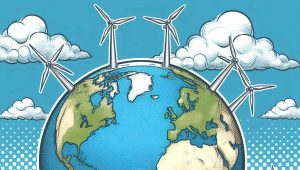Nathalie Nahai on ‘Twitter 2.0’, AI and Creativity, and Social Media News Sources
by Mathew Broughton on 23rd Jun 2023 in Podcast
On this week's episode of the MadTech Podcast, web psychologist and author Nathalie Nahai joins ExchangeWire editor Grace Dillon and research lead Mat Broughton to discuss Linda Yaccarino's ambition to build 'Twitter 2.0', the philosophical implications of AI on creativity, social media influencers as news sources, and more.
Yaccarino on mission to revive Twitter
Is Twitter 2.0 possible and will advertisers buy into it?
Linda Yaccarino has officially become CEO of Twitter, having taken the reins from Elon Musk last week. In her first memo to staff, Yaccarino called on the social media platform’s employees to help launch “Twitter 2.0” and stated that the company “is on a mission to become the world’s most accurate real-time information source and a global town square for communication.”
While such ambitions will not be easily met, some commentators remain optimistic about Yaccarino’s appointment. The former NBCUniversal chair of advertising sales’ successful track record could turn things around for the ailing social media network, which has fallen out of favour with advertisers since being acquired by Musk last year. According to reports, Twitter’s top 50 advertisers have significantly reduced their spending on the platform, and ad revenue overall has declined by an estimated 28% since 2022.
AI will complement creativity, argues futurist
Do you agree with Marr’s sentiment? Could generative AI redefine creativity as we know it?
Generative AI tools will not eradicate human creativity, but complement and enhance it, argues futurist Bernard Marr. Protocols such as Dall-E and ChatGPT could make artistic pursuits more accessible to more people by being used to address the “mundane” tasks or resolve the obstacles that can accompany creative endeavours, such as a lack of time or technical ability. Moreover, their capacity to process vast amounts of data means that AI programs can generate new ideas that inspire humans to create works of art that they may never have thought of before.
Marr asserts that the human element of art will remain intact because only people can provide the context that gives a piece of work meaning. However, creators must be conscious of the risk of unintentionally infringing on someone else’s copyright, as the citation of original sources and attribution is severely underdeveloped within these protocols. Similarly, the matter of authorship and ownership is still blurry, as the ‘new’ ideas generated by AI will have been drawn from existing works created by other people.
Younger audiences turn to influencers for news
Should we be concerned by this trend? Could young people’s preference for news delivered by influencers become dangerous?
Younger audiences are more likely to get their news from influencers on their favoured social platforms than from mainstream news outlets. That’s according to the 2023 Reuters Institute Digital News Report, which found that while traditional journalism is more popular on Facebook and Twitter, networks with younger user bases — such as TikTok, Snapchat, and YouTube — generally rely on “personalities” as their main news sources.
While some legacy broadcasters have found success on newer platforms, many are wary that they don’t currently offer secure monetisation opportunities, per the report. Journalists have also struggled to adjust to TikTok’s short-form video format, and some outlets are apparently concerned about the platform’s relationship with Beijing. While the ByteDance-owned platform was identified as the fastest-growing platform for news consumption, Facebook remains the leader, despite reportedly reducing the amount of news promoted across its properties.
AICreativeInfluencerNewsPodcastSocial MediaTwitter / X








Follow ExchangeWire